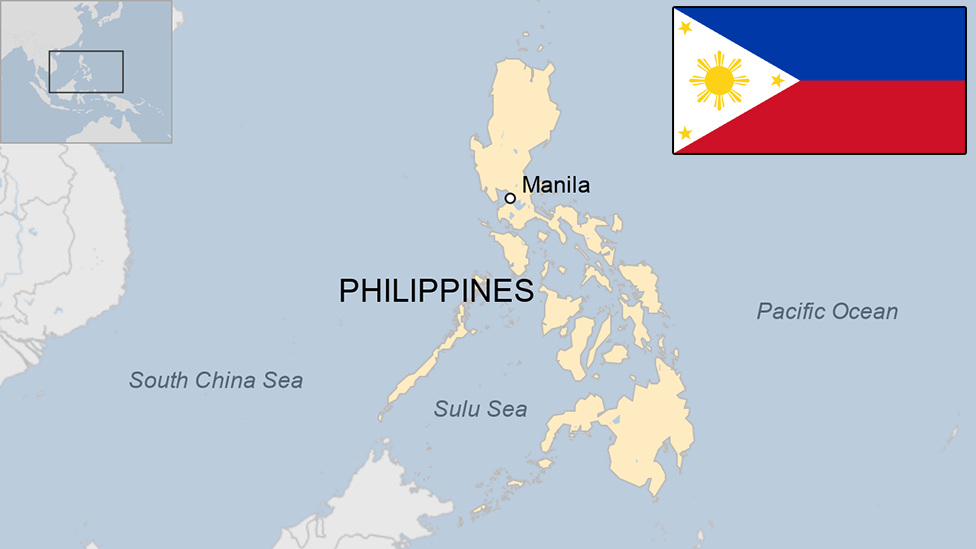Typhoon Haiyan: Thousands feared dead in Philippines
- Published
Rupert Wingfield-Hayes reports from the airport at Tacloban: ''A scene of complete devastation''
Around 10,000 people may have died in just one area of the Philippines hit by Typhoon Haiyan, according to officials.
One of the worst storms on record, it destroyed homes, schools and an airport in the eastern city of Tacloban.
Neighbouring Samar island was also badly affected, with reports of 300 people dead and 2,000 missing.
The Philippine government has so far only confirmed the deaths of 151 people throughout the country, but hundreds of thousands have been displaced.
The BBC's Rupert Wingfield-Hayes reports that the scene in Tacloban, the capital of Leyte province, is one of utter devastation.

Houses in Tacloban have been flattened by the massive storm surge that accompanied Typhoon Haiyan.
There's no clean water, no electricity and very little food.
City officials said they were struggling to distribute aid and that looting was widespread.
In some areas, the dead are being buried in mass graves.
Our correspondent says hundreds of people are at the airport, itself badly damaged, trying to get on a flight out of Tacloban.
The typhoon is now bearing down on Vietnam. More than 600,000 people have been evacuated in northern provinces.
At least four people were reported killed there, apparently while trying to escape the storm.
The BBC Weather Centre says the typhoon is expected to make landfall south of Hanoi on Monday afternoon local time (between 03:00 and 09:00 GMT), although it will have decreased markedly in strength.

The storm was so powerful that it washed large ships ashore in the city of Tacloban
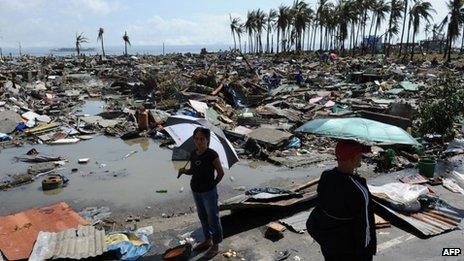
Homes were flattened in much of the city
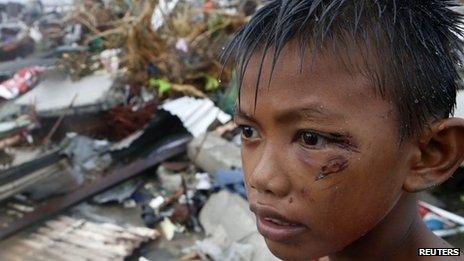
Many people in Tacloban have been made homeless
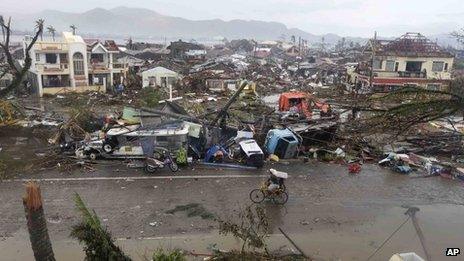
The scene resembled the aftermath of a tsunami
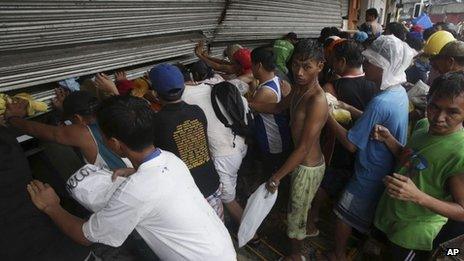
People have been struggling to find food
Relief operation
Philippine Interior Secretary Mar Roxas says the scale of the relief operation that is now required is overwhelming, with some places described as a wasteland of mud and debris.
"From a helicopter, you can see the extent of devastation. From the shore and moving a kilometre inland, there are no structures standing. It was like a tsunami," he told Reuters news agency.
"I don't know how to describe what I saw. It's horrific."
A UN official who arrived in Tacloban on Saturday, Sebastian Rhodes Stampa, said he was told there had been a 3m (10ft) water surge through the city, in places up to 10m.
"Vehicles thrown up against walls, telegraph poles down, roads blocked. It's a pretty grim situation all the way round," he told the BBC.
Tecson Lim, city administrator of Tacloban, told the Associated Press that the death toll in the city alone "could go up to 10,000".
Police chief Elmer Soria said about 70% to 80% of the area in the path of the storm in Leyte province was destroyed.
He said most of the deaths were from drowning or collapsed buildings.
Faith Pelies: "I told [my husband], 'Just save our baby and forget me'"
"Tacloban is totally destroyed. Some people are losing their minds from hunger or from losing their families," high school teacher Andrew Pomeda told AFP news agency.
"People are becoming violent. They are looting business establishments, the malls, just to find food, rice and milk... I am afraid that in one week, people will be killing from hunger."
Meanwhile Leo Dacaynos, an official in Eastern Samar province, told local radio 300 people had been found dead in a single town, Basey, with another 2,000 missing and many injured.
Communication is still limited in many areas.
The latest report, external from the Philippines' Disaster Risk Reduction and Management Council confirmed 151 deaths as of 22:00 GMT on Saturday. It said almost 480,000 people had been reported displaced.
Thousands of troops have been deployed to the disaster zones. However, rescuers are struggling to get to remote areas, hampered by debris and damaged roads.
The Philippines has been offered aid from the following:
US Defence Secretary Chuck Hagel said the US was delivering helicopters, fixed-wing aircraft and search and rescue equipment on request
The European Commission released 3m euros ($4m; £2.5m) in emergency funds and is sending a team of humanitarian experts
The UK Rapid Response Facility is to provide £5m ($8m) in aid and a £600,000 shipment of emergency equipment. A team of four experts is already in the disaster zone
The UN is to provide tents, food and relief supplies
Typhoon Haiyan - one of the most powerful storms on record to make landfall - swept through six central Philippine islands on Friday.
It brought sustained winds of 235km/h (147mph), with gusts of 275 km/h (170 mph), with waves as high as 15m (45ft), bringing up to 400mm (15.75 inches) of rain in places.
.gif)
- Published8 November 2013
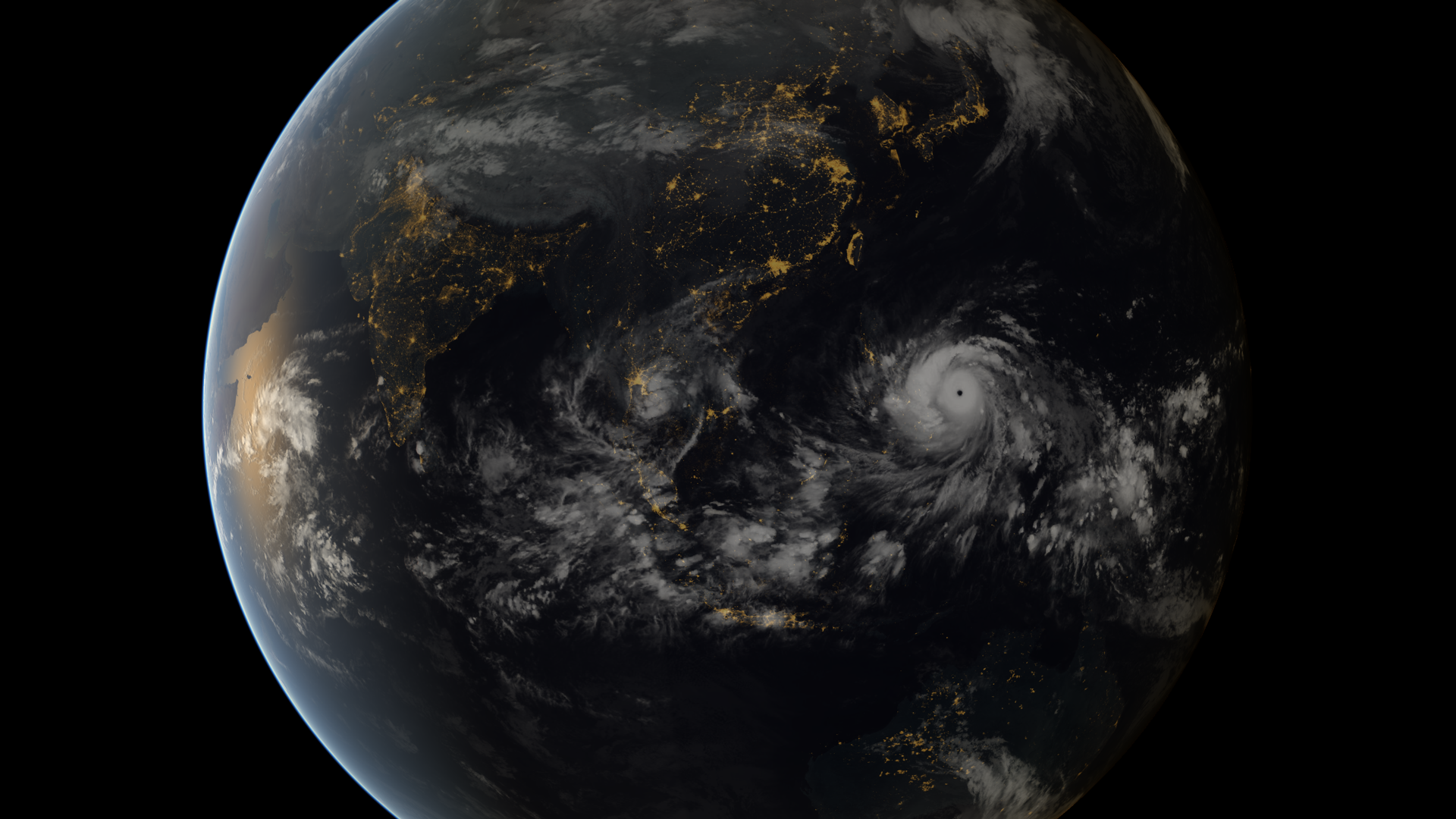
- Published10 November 2013
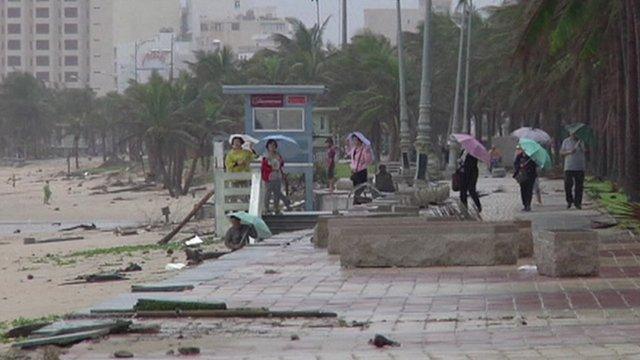
- Published10 November 2013
- Published8 November 2013
- Published5 July 2023
